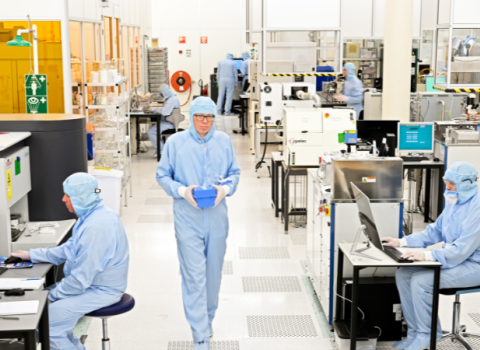Much done, more to do is the conclusion of Cambridge entrepreneur Hermann Hauser’s review of the UK’s latest public-private collaboration in innovation, its Catapult Centres. His report, which was commissioned by the Business Secretary, Vince Cable, calls for the creation of one or two new centres each year, culminating in 30 centres with annual funding of £400 million by 2030.
Hauser praised the first seven centres, spread across sectors including cell therapy, satellite applications and high value manufacturing, but stressed that the UK is “playing catch up” with the leading innovation systems of Korea, Germany and the US. The centres need “continued support to strengthen capability, remain world beating and to expand their capabilities,” he said, calling for the budget of Innovate UK, the UK’s innovation agency (formerly the Technology Strategy Board), to be doubled to £1 billion annually by 2020 to achieve this.
The report, published as part of a broader review of the UK’s national innovation strategy, calls for a “re-doubling” of efforts by the Catapults to engage with small and medium-sized enterprises (SMEs). “The Catapult centres allow SMEs to gain access to equipment they normally couldn’t afford, even if they wanted to invest,” Hauser said at the launch of the review.
The multimillion-pound equipment at the centres is funded in equal part by state, industry and by competitive grants. Retaining this one third funding model is crucial for Hauser, who warned the UK against following governments elsewhere in slowly phasing out government funding for innovation centres, hoping industry will foot the whole bill. “This is a very bad idea,” he said. “If industry wants to invest in something, it will. But it’s the high-risk projects that industry won’t take on alone that will allow a sector to become world-leading.”
Other recommendations include better engagement with national and international universities, new key performance indicators to measure a Catapult’s impact and a new role for the centres in identifying and addressing barriers to innovation generally.
Formula for success
An earlier report by Hauser led to the creation of the first seven technology and innovation centres with an initial investment of over £200 million in 2010. Four years on, he describes these centres as “a great stride forward” noting in particular the success of the high value manufacturing centre, which has attracted 40 per cent of its funding from industry – above the required one third.
While the five younger Catapults in cell therapies, offshore renewable energy, connected digital economy, future cities, and transport systems, cannot yet be judged on their output, Hauser found that they had all managed to attract the right quality of people in the highest management positions.
These successes show that centres have each tapped into something, “that actually matters to the UK,” he said. This is thanks to the criteria employed by Innovate UK for choosing the themes for the centres, namely:
- A multi-billion pound global market to exploit
- A UK global lead in research capability
- Potential to attract the knowledge-intensive activities of globally mobile companies to set-up in the UK
- Necessary absorptive capacity to commercially exploit in the UK
- Close alignment with national strategic priorities.
Room for improvement
Despite these successes, investment in R&D in the UK continues to lag behind that of its main competitors.
Hauser compared the initial funding of £200 million for the Catapult network to the German Fraunhofer Institutes which have a combined revenue base of €2 billion. While investment in the Catapults has grown to £500 million now, that is “over a period of 10 years,” he said, “so it’s £50 million a year versus €2 billion.”
The Catapults will also need to work closer with universities if they want to bridge the valley of death between the outputs of grant-funded academic research and a piece of intellectual property that is ready for commercialisation. “Nobody, I think, doubts the prowess that we have in science and everybody, I think, laments the fact that we don’t seem to be getting as much value from our science in the UK as maybe some other countries do,” said Hauser.
While many of the Fraunhofer Institutes are headed by an active professor from a local university, the Catapults did not follow this route. Improvements in the future will include more strategic relationships with the research base and joint programmes and projects. “We need to create a more permeable interface between industry and academia,” Hauser said, “allowing people to move from industry to academia and back again”.
Each person brings with them both their knowledge base and their personal relationships. “I only know one effective way of transferring technology,” he said, “and that is to transfer people.”





 A unique international forum for public research organisations and companies to connect their external engagement with strategic interests around their R&D system.
A unique international forum for public research organisations and companies to connect their external engagement with strategic interests around their R&D system.